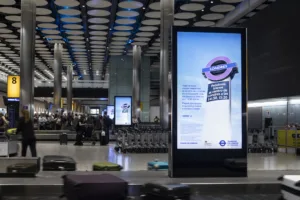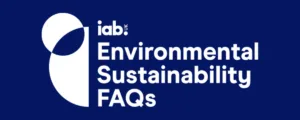Partner Content
NDA has partnered with VIOOH for a series of articles exploring OOH advertising and the role programmatic technologies will play in its development. As part of this project, we spoke to industry leaders to hear their predictions for DOOH and programmatic OOH in 2021.
Next up is Ben Holmes, Technical Account Manager at MiQ.
What are the biggest opportunities, and challenges, for DOOH in 2021?
The biggest opportunity for DOOH moving into 2021 will be its position within a digital marketing plan. As omnichannel activation becomes a reality for advertisers, DOOH will play a key role in the ability to extend the reach of a digital campaign, targeting audiences on screens much larger than the devices in front of them.
DOOH inventory will only become more accessible as we move into next year, as platforms such as VIOOH and DSPs such as Hivestack and The Trade Desk allow media buyers the ability to activate programmatic DOOH easier and more effectively – ultimately this is a massive opportunity for digital buyers who are experienced buying media through programmatic technologies.
2021 could see the democratisation of OOH, giving rise to greater creativity and better integration between channels.
A challenge which we have seen across this year and one which could continue into 2021 is related to the global pandemic. As countries went into lockdown, advertising budgets fell and DOOH was one of the first casualties as its audience was no longer available. We hope that 2021 will see a resurgence of the channel as life starts to get back to normal, but one thing 2020 has taught us is to expect the unexpected.
Global macro factors aside, another challenge the market may face once demand starts to increase, is the availability of supply. Unlike traditional digital inventory, where there is close to endless supply, there are a limited number of digital screens and only so many hours in the day to serve advertiser creative. Buyers may have DOOH on plan with good intentions, but if bought programmatically or too close to the campaign live date, this could restrict their ability to secure the inventory they need. Therefore brands still need to plan and be clever with their strategies to maximise the effectiveness of DOOH.
What are the biggest opportunities, and challenges, for programmatic in OOH in 2021?
Programmatic technology has the ability to revolutionise OOH in the same way web-based advertising evolved from buying banner-ads directly from publishers. The technology gives advertisers access to multiple inventory sources as well as the ability to bid on OOH screens much closer to real-time.
Programmatic DOOH also allows marketers to make better use of data, both to activate and to optimise campaigns. At MiQ, part of the success of our digital campaigns come from the ability to join disparate data sets and this approach is one we take across our DOOH activation too. The first DOOH campaign we ran for Hoover was informed and optimised through user engagements from an accompanying display campaign.
The outcome of this was amplified engagement across the display creatives in areas where the OOH messaging was aligned. Our ability to connect the two channels in this way was a UK media first and the enhanced performance seen throughout the campaign supported the benefits of omnichannel activation and increased connectivity.
Moving into 2021, our programmatic OOH strategy will continue to have data at its centre with our partnership with Skyrise Intelligence giving us access to the richest mobile data set currently in the market.
A challenge the channel still has to overcome is in relation to the adoption of a fully programmatic solution. To date, the majority of programmatic DOOH campaigns have been run through PMP deals with fixed floor prices and there has been no real ability to bid on open marketplace inventory at scale.
Whilst this gives digital marketers access to the channel in environments they are familiar with, the levers they can pull are limited due to limited and disjointed supply, fixed bidding models and limited feedback when optimising a campaign. In addition to this, there is no obvious winner when it comes to choosing the best technology to buy DOOH through – Do buyers opt to work within a Omnichannel DSP like The Trade Desk (which lacks the ability to plan DOOH effectively) or one which is DOOH native but limits omni channel activation.
Time will tell, but I hope over the course of 2021, the industry rises to these challenges and makes programmatic OOH the preferred way of buying the inventory.
How has COVID impacted your planning for the use of programmatic advertising in OOH in the next 6 months?
As OOH is so dependent on a normal way of life (people travelling, shopping etc.), COVID unfortunately has had a massive impact on the channel’s use within a marketing strategy. Similarly, OOH was meant to be a focus for us this year after initial successes in 2019, but was deprioritised for the same reasons. Over the course of 2020 we have been setting ourselves up to offer our clients a best-in-class DOOH solution by making some key partnerships in data and activation.
Moving into next year, with new supply entering the marketplace and advancements in specialist DSPs we have confidence that our approach will be unique in market and we are taking an optimistic view that DOOH will be a success across 2021.
Do you intend to decrease or increase investment in programmatic OOH in 2021?
Over the course of the last year and moving into 2021, our focus has been and continues to be on improving creative, omnichannel activation and preparing for the cookieless world. DOOH is a channel which sits firmly in all three of these areas and by that nature we expect our focus and investment to significantly increase across DOOH moving into 2021 (Covid dependent of course!)
What was your favourite programmatic OOH campaign this year?
As like most people, I haven’t had the chance to see any many OOH campaigns in the flesh, however some of the more memorable ones I have seen shared across social media have been related to keeping safe during the pandemic.
Paddy Power was one of the first to use OOH to promote social distancing right at the start of lockdown with their messaging relating to giving our NHS better odds. At the time, it was a great way to lighten the mood about the pandemic as well as capitalising on something which everyone was a part of. Great moment marketing









